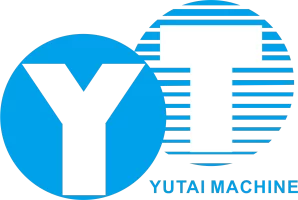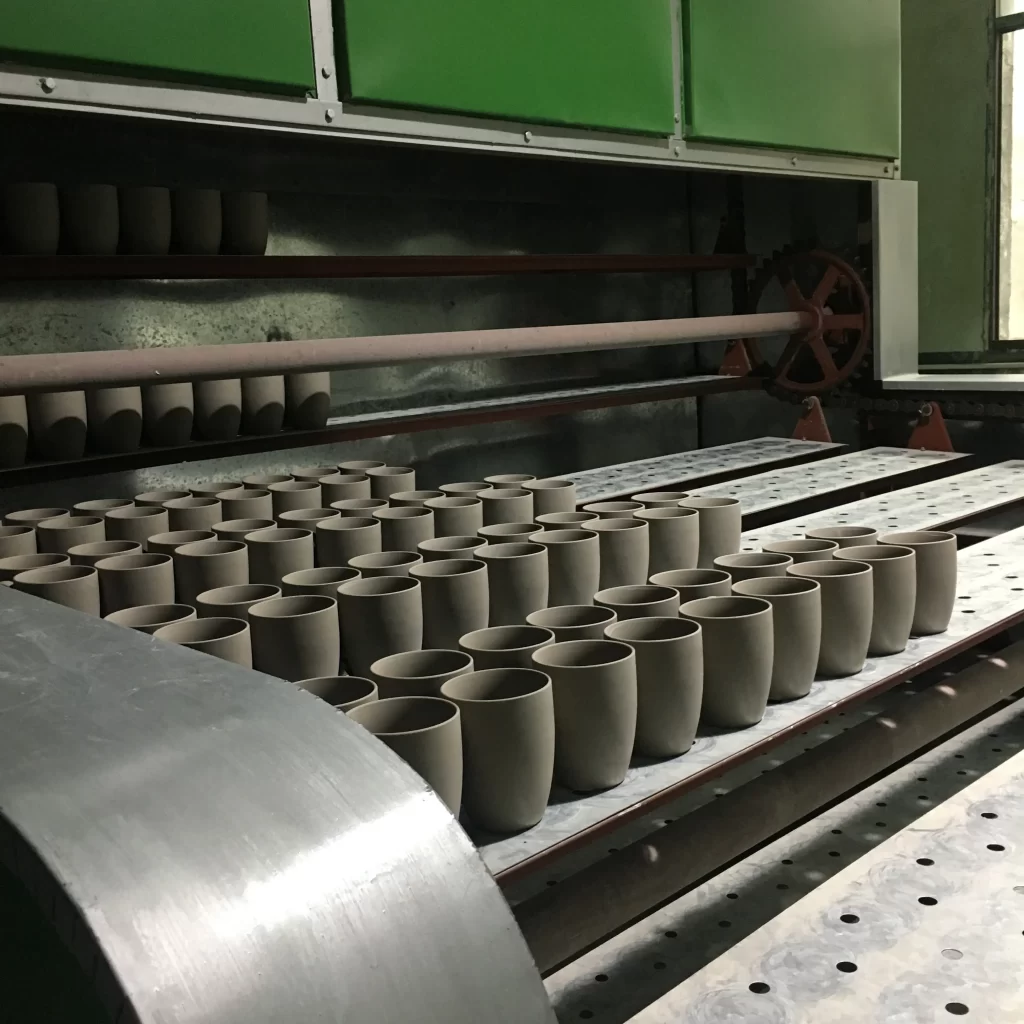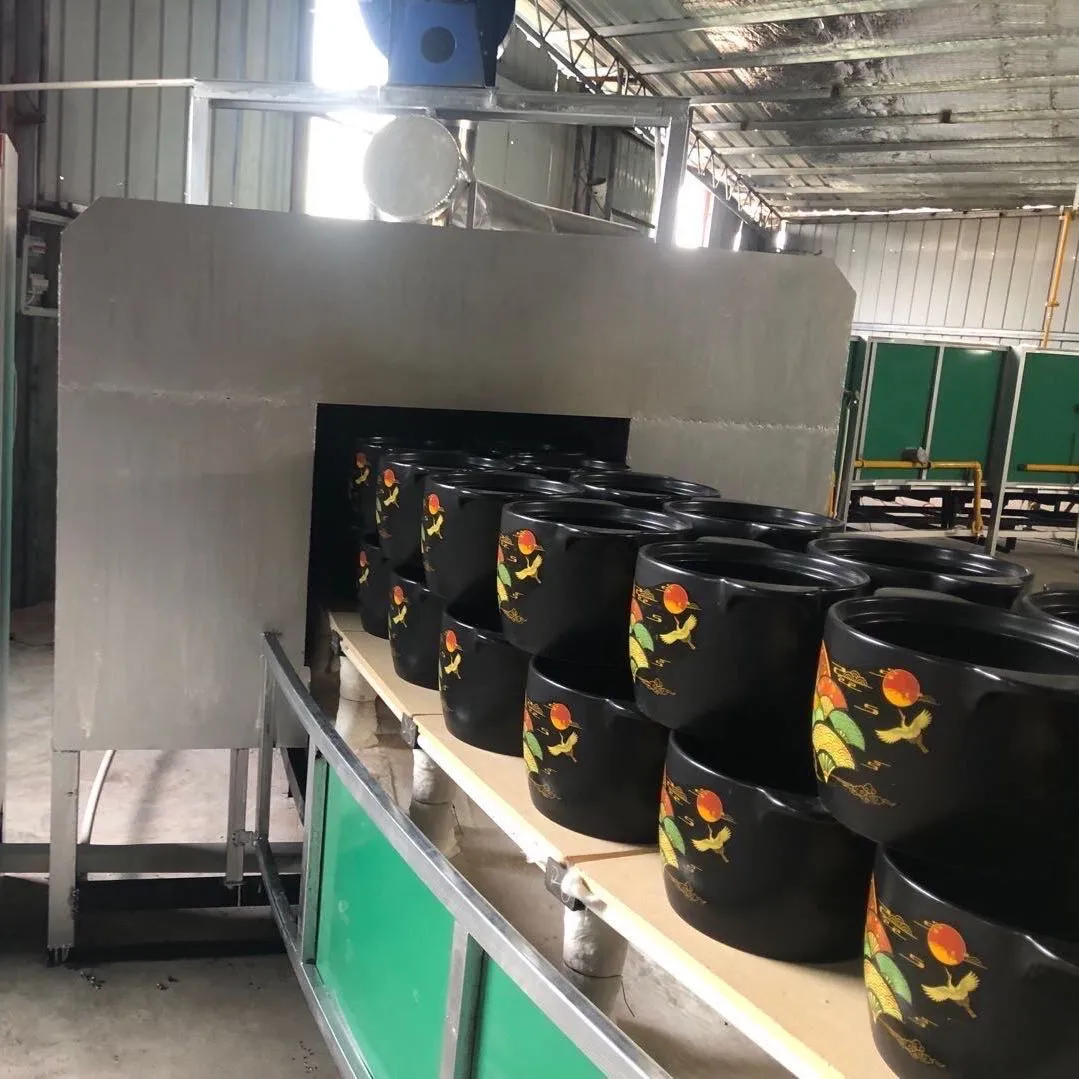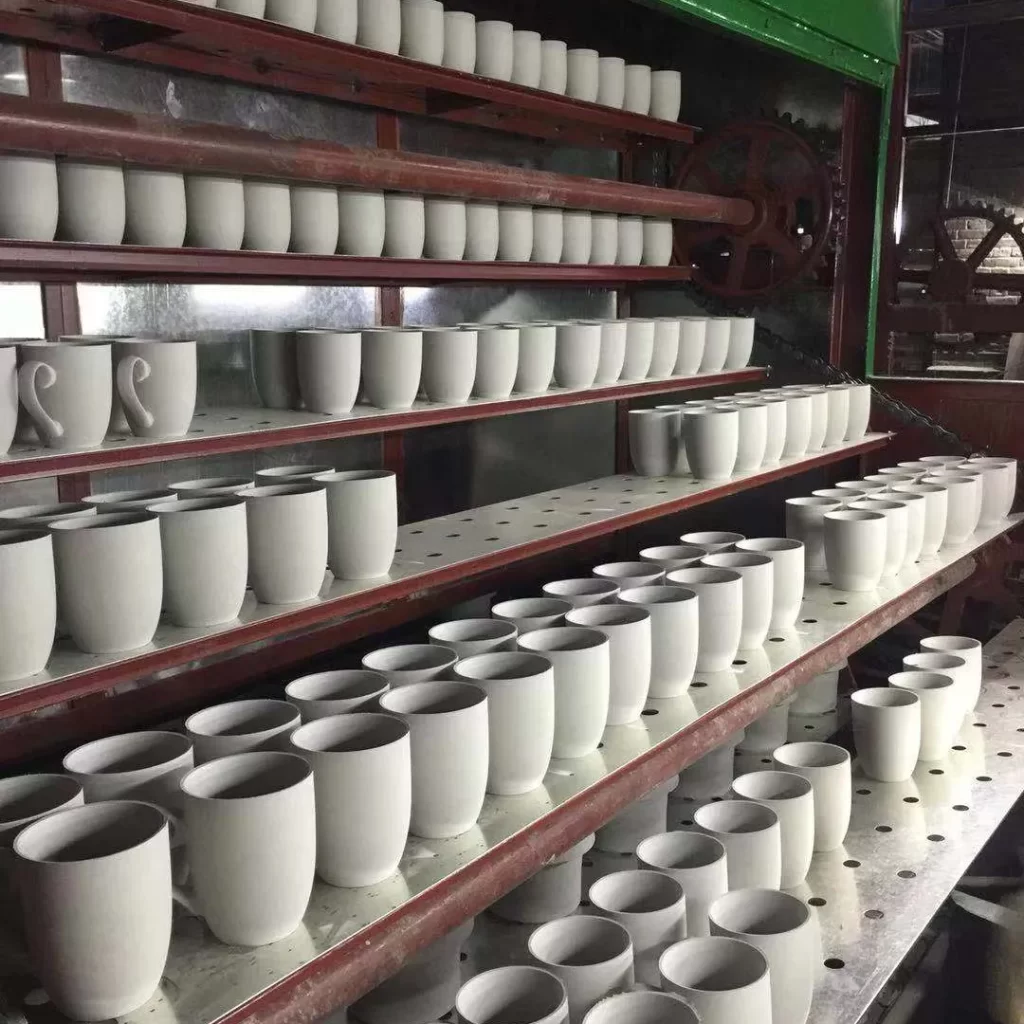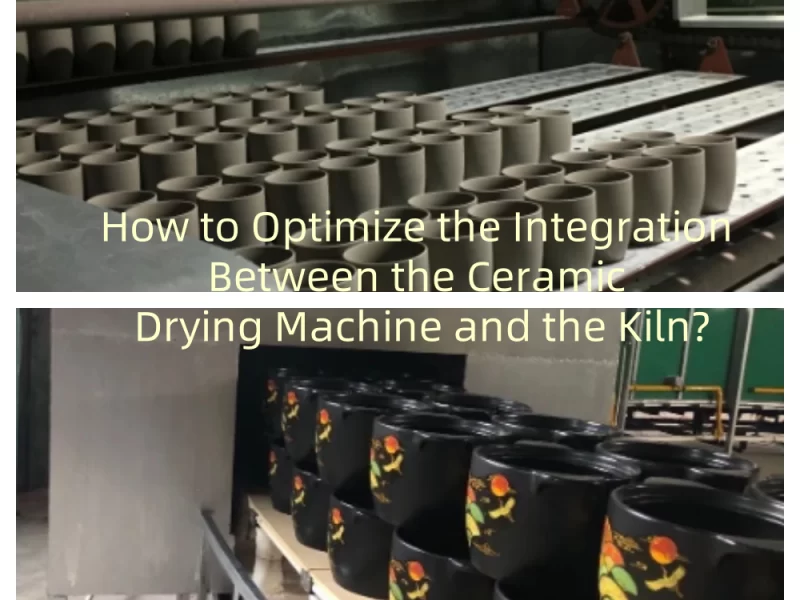
In ceramic tableware manufacturing, kilns and drying machines are two of the most critical machinery. Effective integration between them greatly affects the quality of the product and manufacturing efficiency. How to optimize the integration between the ceramic drying machine and the kiln has been the core issue for ceramic manufacturers. Yutai will share practical strategies for optimizing the connection between the drying and firing processes to help companies improve production line efficiency.
The Importance of Dryer-Kiln Integration
After forming, ceramic bodies contain a certain amount of moisture, which must be evenly removed through the drying machine to prevent quality issues such as cracking and deformation during kiln firing. Insufficient drying can lead to firing defects, while overdrying wastes time and energy. Therefore, a sound connection between the drying and firing processes is essential for ensuring consistent, high-quality ceramic products.
Optimization Strategy 1: Coordinating Drying Temperature and Humidity Parameters with the Kiln Firing Curve
Failure to effectively coordinate the process parameters of the drying machine and kiln during production can lead to inconsistent product quality and even firing failure. Coordinating the temperature, humidity, and firing curve between the two is a crucial step in ensuring the quality of the finished product.
1.Precisely Control Drying Temperature and Humidity
Adjust the drying machines’ temperature and humidity profile based on the shape, thickness, and material characteristics of the ceramic product to achieve gradual drying and avoid internal stress caused by excessive surface drying.
2.Matching the Kiln Firing Curve
The firing temperature and heating rate should be optimized based on the residual moisture content of the green body after drying to prevent sudden temperature increases in the kiln that could cause cracking.
3.Data Sharing and Linkage
Use an intelligent monitoring system to link process data between the ceramic drying machine and kiln, enabling real-time parameter adjustments to ensure stable, continuous production.
Optimization Strategy 2: Matching Production Process Time with Equipment Capacity
Even with advanced equipment technology, mismatching production capacity with production pace can lead to resource waste or production line bottlenecks. Properly matching the capacity and time of the drying machine and kiln is crucial for improving overall efficiency.
1.Synchronized Capacity Design
The production capacity of the ceramic drying machine and kiln must be properly matched to avoid kiln idling due to excessive drying capacity or drying backlogs due to excessive kiln capacity.
2.Buffer Bin and Transfer Mechanism
A buffer bin is installed between the ceramic drying machine and kiln to flexibly adjust the production pace, reduce equipment idle time, and improve overall production line efficiency.
3.Dynamic Scheduling and Scheduling
Utilize the production management system for dynamic scheduling, flexibly adjust the drying and firing cycles based on order demand, and avoid bottlenecks.
Optimization Strategy 3: Quality Monitoring and Feedback Mechanism
Real-time monitoring of product quality and equipment status can promptly identify potential problems, ensure smooth production processes, and reduce defective rates, which is crucial for achieving efficient production.
1.Key Quality Indicator Monitoring
Including moisture content after drying, green body strength, and shrinkage after firing, these indicators serve as a basis for process adjustments.
2.Real-Time Data Collection and Feedback
Use online sensors to monitor key parameters, provide immediate feedback on any anomalies, and quickly adjust the ceramic drying machine and kiln parameters.
3.Closed-Loop Process Optimization
Based on quality inspection results, continuously optimize the drying and firing processes to achieve continuous improvement.
Optimization Strategy 4: Intelligent Equipment Upgrade
With the development of intelligent manufacturing, intelligent equipment has become key to improving production efficiency and product quality. Intelligent upgrades not only improve automation levels but also enable remote monitoring and data-driven decision-making.
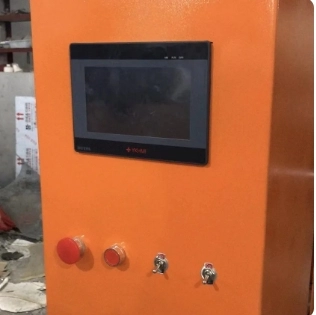
1.Automated Control Systems
Introducing PLC and intelligent control systems enables automatic adjustment and linkage of the ceramic drying machine and kiln parameters, reducing human error.
2.Remote Monitoring and Diagnosis
Remotely monitor equipment operating status to promptly detect and troubleshoot faults and ensure production continuity.
3.Data-Driven Production Decision-Making
Utilizing big data analysis to optimize equipment operating efficiency, reduce energy consumption, and improve product consistency.
Conclusion
Ceramic drying machines and kilns are core equipment in ceramic manufacturing. Properly optimizing their production integration can not only significantly improve product quality but also effectively reduce production costs and increase production line utilization. Through precise parameter control, capacity matching, quality monitoring, and intelligent upgrades, ceramic companies can build more efficient, green, and intelligent production systems. As a professional ceramic machinery manufacturer, Yutai is committed to providing customers with advanced drying machines and kiln solutions. Contact us to help you with your ceramic tableware production!
